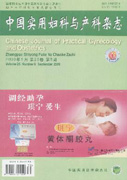Labor pain threatens the health of mother and infant seriously and it accounts for the biggest part of non-medical indications of cesarean section in our country.Neuraxial labor analgesia is the most effective and commonly used therapy for pain relief during labor and delivery without increasing the rate of cesarean section.However,it can cause some side effects and complications like supine position syndrome,inadequate anesthesia and fever.To strengthen the process management of labor analgesia,clear assignment of responsibility,carring out education and training and developing complication treatment plan are important measures to prevent risks.

